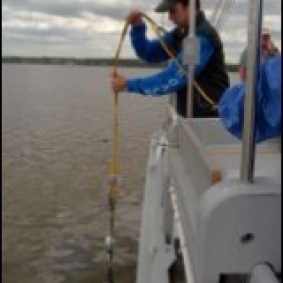Eight students will be presenting the summer work at the Ocean Sciences Meeting in March 2022!
Adam Obaza, University of Miami
Class Year:
2005Mentor:
Christopher Rowe, Ph.D.Project Title:
Effects of Polychlorinated Biphenyls (PCBs) on the Behavior of Snapping Turtles (Chelydra serpentina)
Abstract:
The release of PCBs into the upper Hudson River during the mid 20th century has potentially had a detrimental effect on the river's biota. To examine some of these effects, snapping turtles were used as a model species to examine several behavioral endpoints. Turtles were chosen for study because they are long lived, accumulate high PCB concentrations due to their high lipid compounds, and are at a high trophic status. Turtles were collected as eggs in the upper Hudson River from both contaminated and reference sites. High PCB load in eggs is due to maternal transport during vitellogenesis. Once hatched, turtles from each treatment group received either contaminated or reference food. To test the sublethal effects of PCBs, assays of four behaviors having implication for survivorship were conducted; righting response (time to reorient body after being inverted), stimulus response (recognition and response to a physical stimulus), foraging efficiency (ability to located and consume food) and predator response (recognition to a visual response representing a predator). The only test with significant results was the latter. Turtles from uncontaminated areas had a greater response to a simulated avian predator than turtles fed contaminated food or from contaminated areas of the Hudson River. Because of this result, PCBs in the upper Hudson River appear to remain a threat to the health of the Hudson River biota, even decades after PCB inputs have ceased.




